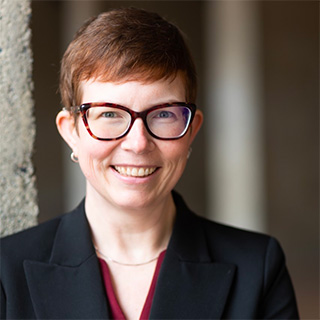By Stephanie Kerschbaum, CREATE faculty member, Associate Professor of English, and Director of the Program in Writing and Rhetoric
I’ve just returned to Seattle from a trip to a conference in Chicago. On that trip, I pointed out to a friend a billboard in a downtown Chicago bus stop inviting viewers to learn to recognize the signs of a rare medical condition. And just a bit later, at my gate in O’Hare, I found myself sitting across from a large advertisement sorrowfully highlighting the signs of autism.

I can’t go very far in my everyday experience without encountering scores of material signs that point in various ways to disability. They’re not always giant billboards trumpeting the signs of a particular disability, but collectively, despite the fact that these signs are often well-intentioned, they nevertheless reinforce problematic orientations to disability that circumscribe how, where, and when disability can be noticed.
Billboards like these signs had a great deal to do in motivating my work in Signs of Disability. One of the stories I tell in the book has to do with a yellow diamond-shaped “Deaf Person in Area” road sign that appeared in my neighborhood and which I subsequently spent a lot of time talking about with people around me. At first, when I pointed the sign out to my husband, we laughed about it. “Good thing we live in the neighborhood,” I joked to him, “so that there actually is a Deaf Person in the Area.” But when I shared this story with other people, they didn’t always think it was funny.
The tension I felt between my own sense that the Deaf Person in Area sign did very little to meaningfully support attention to deafness and other people’s strong defenses of the sign (and others like it) was key to helping me build one of the core conceptual terms in Signs of Disability. That term, dis-attention, is an intentionally clunky neologism that points to the ways that disability is simultaneously hyper-perceptible and invisible in everyday life. The Deaf Person in Area needed a bold yellow sign warning others about her presence, but of course no one passing the sign has any idea who this Deaf Person in Area actually is, nor would they likely be able to identify the Deaf Person in Area.
As a middle-aged white deaf cisgender woman in a heteronormative relationship, how deafness appeared on my body and became available for others to notice was a complicated question, and deafness was never legible outside of its entanglements with race, gender, sexuality, age, environment, and more. I started by pointing to my behind-the-ear hearing aids or the ways that others might interpret the sound of my voice or encounters where I am signing with other people or encounters where I announce or name my deafness in an interaction. But the list of ways that someone might identify cues pointing to deafness kept growing, and were interactionally contingent as well as tied up in others’ perceptual practices which are themselves shaped by and through cultural milieus often saturated with ableism and dominant orientations to disability that limit how and when it can be perceived.
Learning to recognize the signs of disability involves building a conceptual and practical vocabulary, to have embodied and en-minded experiences that make such signs available for noticing, and the central project of the book is to invite readers to consider not only how dis-attention shapes perception of disability, but also the ways that disabled ways of knowing and being can help change how disability comes to be noticed and to matter in the world.